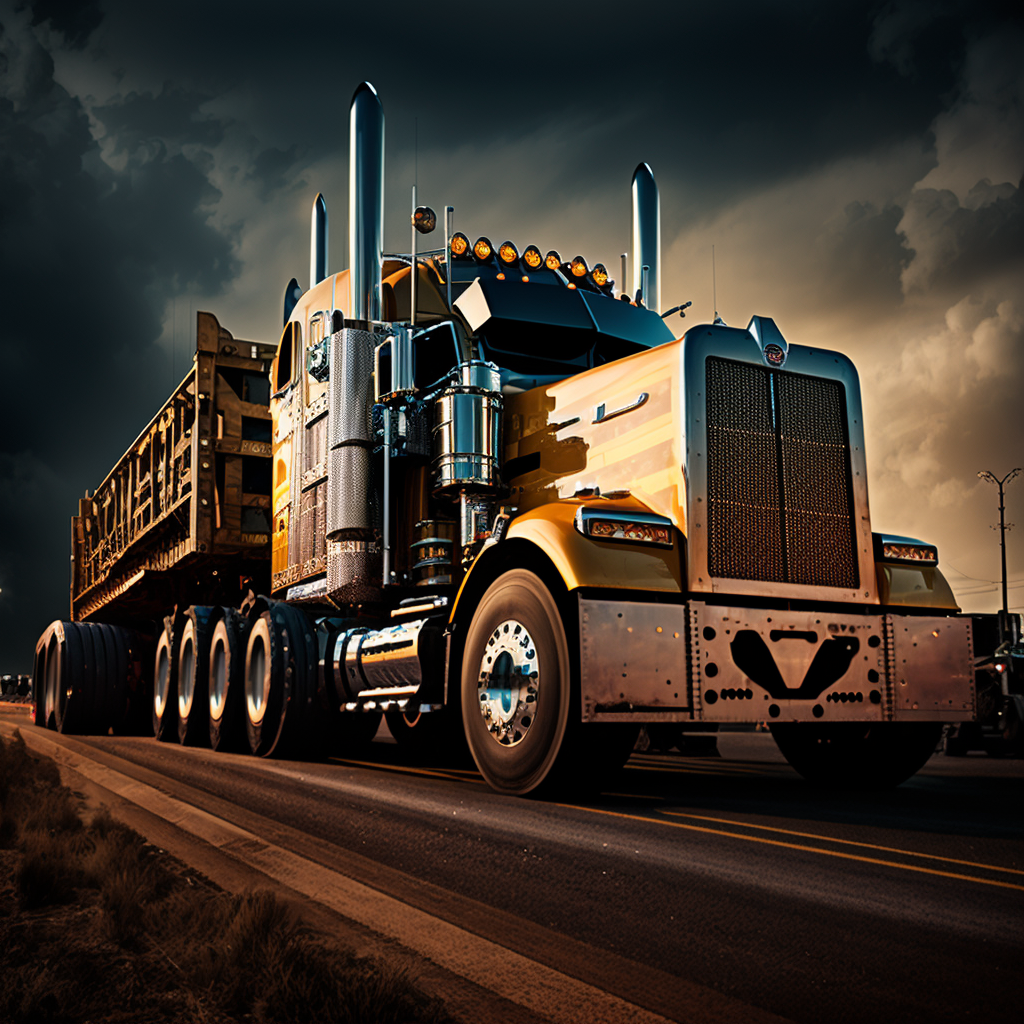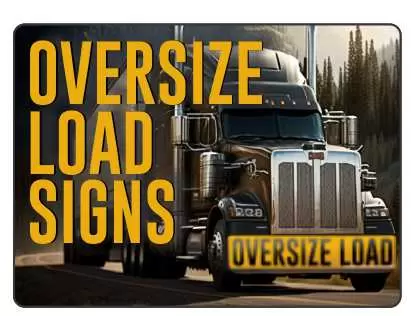Everything You Need to Know About Oversize Load Signs 2023
Everything You Need to Know About Oversize Load Signs 2023


Requirements for using oversize and overweight permits
The requirements for using oversize and overweight permits vary by state and depend on several factors, including the size and weight of the shipment and the route it will take.
https://ops.fhwa.dot.gov/freight/sw/permit_report/index.htm
Generally, carriers must obtain an oversize or overweight permit before transporting goods that exceed standard size and weight limits. The permitting process typically involves submitting an application that includes detailed information about the shipment, such as its dimensions, weight, and route.
In addition to obtaining a permit, carriers may be required to meet other requirements to ensure safe transportation. These requirements may include using specialized equipment, such as oversized trailers or escort vehicles, to ensure that the shipment can be transported safely.
Carriers may also be required to follow specific routing instructions to avoid potential hazards, such as low bridges or narrow roads. This may involve working with state agencies to develop a route plan that takes into account the shipment's size, weight, and any potential obstacles along the way.
Finally, carriers may be subject to additional safety regulations, such as restrictions on the hours of operation or mandatory rest breaks, to ensure that drivers are not fatigued while transporting oversize or overweight shipments.
Overall, the requirements for using oversize and overweight permits are designed to ensure safe and efficient transportation of goods on our nation's roadways. Carriers must comply with these requirements to obtain the necessary permits and to avoid potential fines or other penalties for noncompliance.
The Importance of Oversize and Overweight Permits for Freight Transportation
Oversize and overweight freight transportation plays a significant role in the movement of goods across the United States. However, due to the size and weight of these shipments, special permits are required to ensure safe transportation on the roadways.
The Federal Highway Administration (FHWA) oversees the permitting process for oversize and overweight shipments. The FHWA issues permits for shipments that exceed standard size and weight limits set by each state. These permits allow carriers to transport goods safely and efficiently, while also ensuring that the public roadways are not damaged.
The FHWA works with state agencies to develop permit regulations that align with national standards for size and weight limits. The goal is to establish uniform standards across the country for oversize and overweight shipments.
When a carrier applies for an oversize or overweight permit, the state agency evaluates the proposed shipment's route and provides guidance on safe transportation. This evaluation may include assessing bridges, overpasses, and other infrastructure along the proposed route to ensure that the shipment can be transported safely without causing damage.
Permitting fees vary by state and are based on the size and weight of the shipment, as well as the distance traveled. These fees help to cover the costs of maintaining and improving the public roadways, which can be damaged by the weight and size of oversize and overweight shipments.
In summary, oversize and overweight permits are essential for the safe and efficient transportation of goods across the United States. The FHWA oversees the permitting process, working with state agencies to establish uniform standards for oversize and overweight shipments. By requiring permits for these shipments, we can ensure that our public roadways remain safe and well-maintained.
Oversize Load Signs 2023
https://www.gao.gov/assets/gao-15-236.pdf
 The Federal Highway Administration (FHWA) has certain requirements for oversize loads to ensure safe transportation on highways. These requirements include obtaining permits, complying with vehicle size and weight limits, using proper warning signs and flags, and adhering to specific routing instructions.
The Federal Highway Administration (FHWA) has certain requirements for oversize loads to ensure safe transportation on highways. These requirements include obtaining permits, complying with vehicle size and weight limits, using proper warning signs and flags, and adhering to specific routing instructions.
In order to transport an oversize load, a permit must be obtained from the state or local agency responsible for the specific route. The permit will outline specific requirements for the load, such as time of day restrictions and specific routes to be taken. The load must comply with federal and state vehicle size and weight limits, and must not exceed any bridge weight limits or height restrictions.
Proper warning signs and flags must be displayed on the front and rear of the oversize load vehicle. The signs must be visible from at least 500 feet away and must be placed at a specific height above the ground. Flags must also be displayed on the corners of the load to increase visibility. Lights may also be required for night travel.
Oversize loads must also adhere to specific routing instructions to avoid low bridges, tunnels, and other obstacles that may pose a risk. In some cases, pilot cars or police escorts may be required to ensure the safe passage of the oversize load.
By following these requirements, oversize load transportation can be done safely and efficiently on highways.
